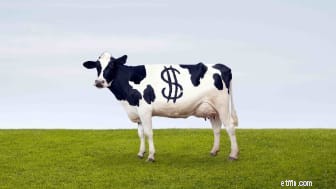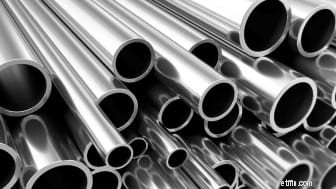
上場投資信託(ETF)は、スイスアーミーナイフに投資しています。あなたは彼らとほとんど何でもすることができます:ポートフォリオコアを構築し、防衛で戦術的になり、月光を浴び、あるいは市場が下落したときに利益さえも得ます。そして、2022年に購入する22の最良のETFのリストを作成する際に、これらすべての目的とそれ以上のことを念頭に置いていました。
おい。 2020年と2021年が私たちにすべてを教えてくれたのなら、それは私たちが準備する必要があるということです。
明確にするために:2022年の最高のETFには、前年の各リストと同様に、ウォール街のアナリストやストラテジストが今後1年間に展開すると見ているさまざまなトレンドを活用するように設計された楽観的なファンドが含まれています。これは、株式、債券、商品にも当てはまります。
しかし、あなたと私は1月1日や12月31日のような任意の暦日に何らかの重要性を割り当てるかもしれませんが、市場は確かにそうではありません。そのため、通常、2022年には2012年や2032年と同じように適切な、どこにでも持ち運べるファンドもいくつか含まれています。また、投資家に2つの消火器を提供しようとしています。嵐の雲がウォール街に降りてきます。
それで、水晶玉は2022年について何と言いますか?多数のストラテジストが一桁台後半の上昇を予測しています。ゴールドマンサックスは、S&P500が5,100に達すると述べています。 RBCは5,050と言っており、LPLファイナンシャルもその範囲の中間点にあります。キップリンガーズパーソナルファイナンス 編集長のAnneKatesSmithは彼らに同意します。 「S&P500の場合は5,050を少し上回り、ダウジョーンズ工業株30種平均の場合は39,000を少し上回ると考えてください」と彼女は2022年の見通しで述べています。 (S&P 500は現在4,649にあります。)
しかし、ウォール街は満場一致で強気ではありません。 BofAは、2022年末までに4,600にわずかに減少することを求めていますが、モルガンスタンレーは、4,400で完全に5%低くなると考えています。
そして当然のことながら、パフォーマンスが直線的になることを期待する人は誰もいませんし、すべてのセクターがこれらの利益または損失に均等に貢献することを期待することもありません。アナリストは、オミクロンCOVIDの亜種が回復のさらに別のハードルとして機能することを少し気が狂っていますが、価値と循環セクターは2022年に再び人気のある呼びかけです。
2022年に購入するのに最適な22のETFは次のとおりです 。それが選択のショットガンブラストのように見える場合、それは意図的です。投資家は、来年、さまざまな目標を追いかける可能性があります。これらのETFピックのそれぞれは、それらを達成するための最高の方法を表しています。重要なのは、これは22のピックすべてのポートフォリオを構築するための提案ではありませんが、あらゆるタイプの投資家に少なくとも2、3のファンドがあると信じています。ですから、読んで、2022年に達成しようとしていることに最もよく一致するしっかりと構築されたETFを見つけてください。
データは12月21日現在です。配当利回りは、エクイティファンドの標準的な指標である過去12か月の利回りを表しています。

ほとんどの読者がおそらくよく知っているファンドである Vanguard S&P 500 ETF を使用して、2022年の最高のETFの調査を開始します。 (VOO、425.69ドル)。そして、予見可能な将来のすべての年次リストで、S&P500追跡インデックスファンドでリードする最低額を賭けることができます。
結局のところ、彼らの仲間はただ追いつくことができません。
毎年、S&Pダウ・ジョーンズ・インデックスの年次報告書は、記録が破られているように見えますが、積極的に運用されているファンドに注目しています。 4月の最新のレポートから、2020年を振り返る:
「[積極的に運用されている]大型株ファンドは、過去10年間で中断したところから回復しました。11年連続で1年間、過半数(60%)がS&P500を下回りました。」
これが大学フットボールだったとしたら、これがもう本当にライバルであるかどうか疑問に思うでしょう。
しかし、考えてみてください。11年連続で、大型株のブレンド製品を売り込んでいる経験豊富な専門家の大多数(顧客のために株を選択するために支払われ、十分に支払われている専門家)はベンチマークを打ち負かすことはできません。では、正確には、ポートフォリオのレビューに専念するために毎週1時間も費やしている平均的な投資家が、インデックスを上回っている可能性はどのくらいあると思いますか?
さらに、S&P 500インデックスファンドは、他の大規模ブレンドインデックス戦略をも上回っています。 2021年まであと数週間で、VOOはモーニングスターカテゴリーの同業他社の80%を上回り、モーニングスターの評価システムから5つ星のうち5つを獲得しました。
製品自体に関する限り、Vanguard S&P 500 ETFは、米国に本社を置き、主要な米国証券取引所で取引されている500社の企業を紹介しています。誰かが「市場」と言うとき、それは通常S&P500を意味します。
覚えておいてください:これは、市場の11のセクターのそれぞれに平等なエクスポージャーを与える完全にバランスの取れたファンドではありません。現在、テクノロジー株はファンドの資産の30%近くでトップになっています。それをユーティリティ、不動産、材料、エネルギーと比較してください。それぞれが3%未満しか占めていません。また、S&P 500はアメリカ経済とともに進化していることも注目に値します。後期には、指数への影響ごとに、エネルギーとテクノロジーは同等でした。
また、S&P 500は時価総額加重であるため、大企業はその業績にも大きな影響を及ぼします。 Apple(AAPL)とMicrosoft(MSFT)だけで、VOOの資産の13%を占めています。下位50の持ち株は1%強を占めています。つまり、投資家がApple、Microsoft、Amazon.com(AMZN)、Tesla(TSLA)などの非常に重要な傑作から「ローテーション」する場合、リスクがあります。
ただし、これらのリスクがあっても、投資家はインデックスに投資することで長い間成功を収めてきました。年間費用が0.03%であるため、これを回避するためのより安価な方法はありません。そのため、VOOは2022年に購入する22の最高のETFに含まれています。
VanguardプロバイダーサイトでVOOの詳細をご覧ください。

10年以上にわたってかなり偏っているもう1つの「ライバル」は、価値に対する成長の優位性です。これには、2021年の成長のもう1つの勝利と思われるものも含まれます。しかし、2年連続で、かなりの数のストラテジストがルネッサンスを求めています。低価格株で。
「2021年の初めに、景気循環に関連する企業の株は、大まかにバリューエクイティとして分類され、成長株を上回り始めました。成長株は、テクノロジーの需要が急増したため、パンデミックの間に支配的でした。デルタの変種が回復を疑った後、その取引は逆転しました。」 JanusHendersonの研究責任者であるMattPeronは言います。 「しかし、GDPが2022年に予想されるように拡大し続け(短期的な後退にもかかわらず)、金利が1インチ高くなれば、金融、産業、材料、エネルギーなどの価値志向のセクターが再び主導権を握る可能性があります。」
そのため、実際に「バリュー」ファンドとしてブランド化されている多数のファンドの中で、 Vanguard High Dividend Yield ETF を選択しました。 (VYM、$ 109.20)2022年の最高のETFの中で大型株の価値を表す。
バンガードのVYMには、非常に単純な目標があります。平均以上の利回りを持つ企業に投資することです。そして、その名に恥じないものであり、現在のS&P 500の2倍以上である2.8%の現在の利回りを提供します。
しかし、そうすることで、Vanguard High Dividend Yield ETFは、2022年に入る前述のバリューセクターの3つ、金融サービス(23%)、エネルギー(8%)、材料(4%)に対して、カテゴリー平均よりも高いエクスポージャーを持っています。 4番目の–資産の10%を占める産業–は、カテゴリーの基準をわずか2パーセント下回っています。
ペロン氏は、今年の連邦準備制度理事会から予想されるような金融引き締めの時期には、「投資家はしばしば評価に敏感になり、短期的にはバリュー株の魅力を高める可能性がある」と付け加えた。これもVYMのポートフォリオにとって朗報であり、株価収益率(P / E)と株価収益率の両方の測定値が同業他社よりも安価です。
VanguardプロバイダーサイトでVYMの詳細をご覧ください。

2022年の最高のETFは、2021年版とは大きく異なりますが、いくつかの選択されたファンドが残っています。また、米国の基本的な安定性と価値のETFを蒸留するよりも年間リストに残っているファンドはありません。 (DSTL、44.75ドル)。
これは、DSTLの動作が異なるためです。また、結果が得られるためです。
多くのバリューETFは、株価純資産倍率(P / S)、株価純資産倍率(P / B)などの指標に基づいて、何が低価格に見えるかを判断します。しかし、Distillateのファンドは、フリーキャッシュフロー(FCF、企業が事業を維持するために必要な資本支出を行った後に残った現金利益)を企業価値(EV、時価総額から始まる企業の規模を測定する別の方法)で割ったものに焦点を当てています。未払い債務と手元現金の要因)
DistillateCapitalのCEO兼共同創設者であるThomasColeは、企業は収益や収益などの特定の数値を「調整」できる一方で、ファンドはFCF / EVを検討していると説明しています(これらの数値に基づく評価指標を混乱させる可能性があります)。 、「現金を偽造することはできません。」
Distillate U.S. Fundamental Stability&Value ETFは、500の米国最大の企業から始まり、その価値の定義に基づいて高価な企業や、高額の債務や不安定なキャッシュフローを持つ企業を排除します。その結果、従来のバリューファンドのようには見えないポートフォリオが生まれました。産業は保有の22%で大きいのに対し、DSTLはヘルスケア(23%)、テクノロジー(21%)、消費者循環(14%)の名前でも重いです。 。モーニングスターは、DistillateのETFを大規模なバリューファンドとは見なしておらず、代わりに大規模なブレンドファンドと見なしています。
コールの価値へのアプローチはまた、彼が現在の市場を私たちのほとんどとは大きく異なって見ていることを示しています。
「私たちの全体的な観察では、市場は、P / EやP / Bのような措置について結論を下した場合よりも、それが生み出すフリーキャッシュフローに基づいて、知らぬ間に高価ではないということです」と彼は言います。 P>
コールのレンズを通しても、パフォーマンスはひどくバラ色に見えます。 DSTLは、2021年に同業他社のほとんどを上回るペースで進んでいます。また、2018年10月23日の開始以来、ファンドは3つの最も資産の大きいETFを平均41パーセントポイント超えただけでなく、 S&P 500は、10ポイントで確実に起動します。
DSTLの詳細については、DistillateCapitalプロバイダーサイトをご覧ください。

投資家はまた、大型株の範囲外でバーゲンハンティングを拡大することもできます。多くのウォール街の予言者にとって、中小企業の方がはるかに魅力的です。
「大型および中型株は歴史に対して35%〜40%のプレミアムで取引されていますが、小型株は現在、歴史に沿って取引されています」と、BofAセキュリティーズのエクイティおよびクオンツストラテジストであるジルキャリーホールは述べています。 「最も安価であることに加えて、分散投資も優れています。…資産クラスのリターンは20年前と比べて相関性が高くなっていますが、[小型]ラッセル2000は、平均して他の資産クラスのリターンとの相関性が低くなっています。過去3年間と過去数十年間のラッセルMidCapまたはS&P500。」
2022年に購入するのに最適なETFには、小型株の価値を攻撃する2つの方法があります。最初に:ペーサーUSスモールキャップキャッシュカウズ100 ETF (CALF、42.34ドル)。
PacerのCALFは、DistillateのDSTLとほぼ同じ方法で価値を認識し、FCF / EV、つまり「フリーキャッシュフロー利回り」を優先指標として使用します。具体的には、CALFはフリーキャッシュフローの利回りで上位100銘柄のS&P SmallCap 600株を選択し、メトリックで重み付けして、四半期ごとにポートフォリオのバランスを取り直します。バランスのために、保有は各リバランスで2%のウェイトで制限されます。
繰り返しになりますが、Pacer US Small Cap Cash Cows 100の現在の持ち株は、バリューファンドに期待できるものではありません。最も印象的なのは、ETFのウェイトのほぼ半分が消費者の裁量株にあることです。他の2桁のウェイトは13%で、インダストリアルだけです。
CALFのようにファンドの評価者に愛されているETFを見つけるのは難しいです。 Pacerのファンドは現在、Morningstarから完全な5つ星を獲得しており、独立した調査会社CFRAは、このファンドをカバーする最高スコアの小型株ETFの1つに挙げています。
PacerETFプロバイダーサイトでCALFの詳細をご覧ください。

スモールキャップバリューオレンジを剥がすためのもう1つのCFRAの提案は、 Roundhill Acquirers Deep Value ETF です。 (DEEP、$ 35.81)、これについては微妙なことは何もありません。
DEEPは、「非常に過小評価されている小型株とマイクロキャップ株」を対象としています。これは、AcquirersFundsの創設者兼マネージングディレクターであるTobiasCarlisleによって2014年に公開された評価指標である「TheAcquirer'sMultiple」を使用して行われます。 Acquirer's Multipleは企業価値にも焦点を当てていますが、FCFではなく、営業利益で割っています。
この倍数専用のサイトは次のように述べています:
「営業利益をトップダウンで計算すると、指標が標準化され、企業、業界、セクター間の比較が可能になります。また、特別な項目(企業が将来再発するとは予想されない収益)を除外することで、これらの収益のみが関連していることが保証されます。オペレーションへ。」
100株ポートフォリオの平均保有額は時価総額で10億ドル弱です。モーニングスターによると、ファンドの79%はマイクロキャップ株、20%はスモールキャップ、残りの1%はミッドです。また、四半期ごとのリバランスごとに1%のウェイトに設定されているため、各ホールディングのパフォーマンスは同等になります。 2022年に向けてのトップホールディングスには、プロセス自動化スペシャリストのHollysys Automation Technologies(HOLI)と防護服プロバイダーのLakeland Industries(LAKE)が含まれます。
セクターの重み付けはもう少し偏っています。ポートフォリオは、金融(30%)、消費者裁量(24%)、および産業(22%)によって支配されています。そのため、残りのファンドの4分の1未満が、他の7つのセクターに分割されます。
当然のことながら、この積極的なアプローチは横向きになる可能性があります。 Roundhillのファンドは、たとえば2019年と2020年に、幅広い小型株とバリュー指数の両方に踏みにじられました。しかし、2021年全体でさまざまな程度でパフォーマンスを上回っています。
DEEPは安くはないことに注意してください。年間経費の0.80%は、平均的なインデックスファンドの基準をはるかに上回っています。
RoundhillプロバイダーサイトでDEEPの詳細をご覧ください。

ほぼ普遍的な譲歩は、主に前年比の比較がそれほど容易ではないため、企業のアメリカは2021年と比較して2022年に成長を見つけるのにはるかに困難になるということです。
つまり、投資家はより選択的である必要があり、多くのストラテジストにとって、それは「品質」要素にますます重点を置くことを意味します。
「イールドカーブがフラットになった以前のサイクルでは、投資家は差し迫った金利ショックに耐えられる質の高い企業を求めていました」と、コロンビアスレッドニードルインベストメンツの副グローバル最高投資責任者であるウィリアムデイビスは述べています。品質には、堅実なバランスシートと強力な競争上の優位性が含まれます。 「2022年に向けて、イールドカーブが急勾配になり、フラットになり、カーブを横切って再び上昇するのを見てきました。これにより、市場をリードしているものに関して、より複雑なシナリオが生まれました。堅実なバランスシートと競争上の優位性–ボラティリティを乗り切る可能性が高くなります。」
iShares MSCI USA Quality Factor ETF (QUAL、$ 141.72)は、品質係数に焦点を当てた最大のETFの1つです。 QUALは現在、大型株と中型株の約75/25の分割を保有しており、高い自己資本利益率、安定した前年比の収益成長、低い財務レバレッジなどのプラスのファンダメンタルズを誇っています。
AppleやMicrosoftなどのテクノロジー企業は現在28%でトップですが、iShares MSCI USA Quality Factor ETFは、ヘルスケア、消費者裁量、通信サービス、および財務にも2桁の評価を与えています。しかし、多くの基本的な指標に焦点を当てた多くのファンドと同様に、これらのセクターのウェイトは時間の経過とともに大きく変化する可能性があります。
それでも、QUALは、防弾財務を備えた優良株でポートフォリオを固定したい投資家にとって、2022年に購入するトップETFの1つになる可能性があるようです。特に掘り出し物が好きな場合:0.15%の経費率はETFの同業他社の93%を下回ります。
QUALの詳細については、iSharesプロバイダーサイトをご覧ください。

過去数年間の最も顕著な傾向の1つは、環境、社会、企業統治(ESG)の基準を優先する方向へのシフトです。持続可能な慣行から会社の役員室での少数派の代表まで、あらゆることに関心を持つ投資家は変化を求めています。
これは、真の投資の急降下に変換されます。 BofA証券によると、2021年の約4分の3まで、世界の株式流入10ドルごとに3ドル(および世界の債券流入10ドルごとに1ドル)がESGに送られていました。長期的には、ブラックロックは、管理下にあるESG ETF資産が過去4年間で毎年300%以上増加していると述べています。
チャンスはまだ終わっていません。
「強力な証拠は、ESG製品とソリューションへの関心が始まったばかりであることを示唆しています」と、登録投資顧問の最高投資責任者であり、独立したブローカーディーラーであるコモンウェルスファイナンシャルネットワークのブラッドマクミランは述べています。 「投資家側では、今後25年間で推定73兆ドルの富の移転が発生する予定です。この富の多くは、女性とミレニアル世代の2つの人口統計の手に渡ります。どちらのグループも持続可能な投資に強い関心を持っています。将来的には、彼らの重要な資本はESGセクターに向けて再配置される可能性があります。」
キプリンガーのESG20のように、いつでも個別の株式を選ぶことができます。しかし、ESGに目を向けて投資する最も簡単で安価な方法の1つは、シンプルなインデックスファンドです。 iShares ESG Aware MSCI USA ETF (ESGU、105.29ドル)。
ESGUは、MSCIがポジティブなESG特性を持っていると判断した大型株と中型株で構成されるMSCIUSA拡張ESGフォーカスインデックスを追跡しています。この指数には、武器メーカーやタバコ会社などの企業や、「非常に深刻なビジネス論争に巻き込まれた」企業も含まれていません。
あなたが得るものは、事実上、コア大型株保有です。 ESGUは現在、Apple、Microsoft、Nvidia(NVDA)などの多くの大型S&P 500コンポーネントを含め、ポートフォリオに320株を保有しています。 2016年後半の開始以来のパフォーマンスも、S&P 500トラッカーとそれほど変わらず、iShares Core S&P 500 ETF(IVV)の132%に対して127%のトータルリターンを示しています。
S&P 500と同じ問題がまだ残っています。アップルとマイクロソフトは、それぞれ6%と5%を超える巨大な個人ウェイトであり、テクノロジーセクターが資産の30%を占めています。
また、あなたにとって「責任がある」ことは、iSharesに対して責任があることと同じではないかもしれません。そのため、ESGUの持ち株のいくつか、いくつか、または多くの長所に同意できないかもしれません。その場合は、代わりにこれらの他のESGファンドを検討してください。
ESGUの詳細については、iSharesプロバイダーサイトをご覧ください。

2022年に人気のあった産業部門から始めて、市場の一部に目を向けていきます。
製造業者、建設会社、多くの運輸会社などの産業は、経済が拡大し、インフレが激しくなるとうまくいく傾向があります。
スティフェルのアナリストは、2022年の見通しで、「産業経済は、より長期にわたって力強いパフォーマンスを発揮する立場にあり、産業生産は22年度の長期平均よりも良好になると予想されています」と述べています。 「需要側は引き続き健全であり、サプライチェーンの制約と相まって、4%以上の工業生産を維持する必要があります。」
11月に可決された1.2兆ドルのインフラ投資および雇用法は、2022年だけでなく、はるか先のセクターの期待にさらに刺激を与えています。
ここでは、産業に対するプレーンジェーンのアプローチが好きなので、産業選択セクターSPDR基金を数えています。 (XLI、102.42ドル)2022年に購入するのに最適なETFの1つです。
XLIは、S&P 500のすべての産業セクターの株式を保有しており、現時点では72です。当然、そもそも時価総額に偏っており、ファンドは時価総額加重であるため、最大の株式が最大の加重を支配します。しかし、少なくとも現時点では、XLIには目を見張るような単一株のオーバーウェイトはありません。資産の5%以上を占めるのは、鉄道ユニオンパシフィック(UNP)だけであり、ユナイテッドパーセルサービス(UPS)、ハネウェル(HON)、レイセオンテクノロジーズ(RTX)はそれぞれ4%以上でチェックインしています。
業界の観点からは、機械(19%)、航空宇宙および防衛(17%)、産業コングロマリット(13%)、および道路と鉄道(12%)の山積みの支援を受けています。航空貨物とロジスティクス、専門サービス、航空会社は、1桁の重みでさまざまな業界に参入しています。
また、XLIはCFRAから5つ星のうち5つを獲得しています。これは、将来を見据えた持ち株レベルの分析、相対的なパフォーマンス、および評価をまとめる際のコストを考慮に入れています。
XLIの詳細については、SPDRプロバイダーサイトをご覧ください。

インフラストラクチャ法案がワシントンを通過したとき、法案の恩恵を受けるために12のインフラストラクチャ株と1つのETFを推奨しました:グローバルX米国インフラストラクチャ開発ETF (PAVE、27.87ドル)。
PAVEとその競合他社は、ETFの名前よりもはるかに深く見える必要がある方法の例です。これは、いわゆるインフラファンドの多くが、公益事業株、エネルギーパイプライン、およびIIJAからの支出から直接利益を得る可能性が低いと思われるその他の企業が豊富にあるためです。
しかし、2017年に開始されたGlobal X U.S. Infrastructure Development ETFは、アメリカの崩壊しつつあるインフラストラクチャを念頭に置いて作成されました。両方の政党でインフラストラクチャへの支出が比較的人気があることを考えると、多額の支出がすぐそこにあるように見えました。PAVEは利益を得るように最適に設計されました。
PAVEは100近くの株を保有しており、そのほとんどは工業(72%)または材料(21%)セクターからのものです。 Steelmaker Nucor(NUE)、電力管理会社Eaton(ETN)、建設資材会社Vulcan Materials(VMC)は、JoeBiden大統領がインフラストラクチャへの支出に注意を向けるとすぐに頭に浮かんだ株の人です。
インフラストラクチャの費用が実際に2022年に費やされ始めると、PAVEのさまざまなコンポーネントは帆に風を感じるはずです。
PAVEの詳細については、GlobalXのプロバイダーサイトをご覧ください。

12月、CFRAは、テクノロジーとエネルギーの2つのセクターをより好意的に見ました。
CFRAのETFおよびミューチュアルファンドリサーチの責任者であるトッド・ローゼンブルスは、次のように述べています。彼は、チーフ投資ストラテジストである同僚のサム・ストーバルが技術とエネルギーをマーケットウェイト(ホールドに相当)からオーバーウェイト(バイに相当)にアップグレードしたことを指摘し、2021年のセクターの相対的な強さは2022年の潜在的なアウトパフォーマンスに位置付けていると付け加えました。
>しかし、テクノロジーが魅力的なETFオプションで溢れかえっている一方で、「投資家はエネルギー部門で魅力的な選択肢が少なくなっています」とローゼンブルース氏は言います。 「CFRAは、米国セクターに分類されている19のETFのうち2つだけに4つ星または5つ星の評価を付けています。」
その1つが Vanguard Energy ETF です。 (VDE、76.44ドル)、これはXLIと同様に、もう1つの単純なセクターファンドです。ただし、XLIとは異なり、VDEはS&P 500の大型株を上回っています。大企業では、104の持ち株ファンドが依然として多額であり(58%)、資産の別の31%は中型株で、残りは小口株です。
ただし、ほとんどの時価総額加重エネルギーファンドと同様に、VDEはすべてエクソンモービル(XOM)とシェブロン(CVX)に関するものであり、これらを組み合わせて資産のなんと37%を占めています。つまり、ファンドの1日のパフォーマンスの3分の1以上が、これらの統合されたエネルギー専攻が特定の日に行うことのすべてに当てはまる可能性があるということです。
しかし、VDEへの最大の影響は、石油価格が何をするかに関係します。ローゼンブルース氏は、アクションエコノミクスは、世界のGDPの上昇もあって、2022年後半までにウェストテキサスインターミディエイト(米国原油)の価格を1バレルあたり平均83.26ドルと予測していると述べています。 Stovallは、OPECの「継続的な強力な供給規律は、価格に上昇圧力を維持する可能性が高い」と付け加えています。
VanguardプロバイダーサイトでVDEの詳細をご覧ください。

私たちが2022年に入ると、他のセクターのCFRAはより熱くなります。それはテクノロジーです。また、ETFおよびミューチュアルファンドリサーチの責任者であるTodd Rosenbluthは、2022年に入ると、投資家はテクノロジーのエントリーポイントを獲得していると述べています。
「最近の高成長でテクノロジー志向の名前の後退は、供給の制約とインフレ圧力が緩和される可能性が高い金利環境の上昇の中で、2022年に向けての購入機会の拡大を表しています」と彼は言います。
ほとんどの場合、投資家は基本的なセクターのインデックスファンドにうまく投資し、それを1日と呼ぶことができます。正直なところ、それは2022年に再びトリックを行うことができます。
ただし、世界の運営方法を変え始めているいくつかの関連する画期的なテクノロジーに投資を集中することをお勧めします。もしそうなら、若い TrueSharesテクノロジー、AI、ディープラーニングETF を検討してください (LRNZ、47.24ドル)、2020年3月に市場に投入され、2022年に購入するのに最適なETFの中で最小であり、運用資産はわずか2,800万ドル程度です。
「ディープラーニングは機会と能力の融合です」と、LRNZの発行者であるTrueMarkInvestmentsのプリンシパル兼CEOであるMichaelLoukasは述べています。 「[人工知能]は、技術的に言えば100年前から存在しています。実際のところ、最初の実際のアプリケーションは、第二次世界大戦中に暗号解読機を見始めたときでした。そして、それが進歩しなかった理由十分な処理能力がなかったため、現在の状況をはるかに超えています。
"AI and deep learning, for it to work, you need data, you need algorithms, and you need processing power, the hardware. And we're finally at a stage where the algorithms, the data, the processors, are all keeping up with one another. It's going to change the world fundamentally."
The LRNZ portfolio, then, is a tight 23-stock collection of leaders in artificial intelligence, machine learning or deep learning platforms, algorithms or applications. While holdings span several industries, cybersecurity, software-as-a-service and biotechnology stand out. "Those three areas are really intertwined with the growth and option of deep learning."
Top holdings at the moment include cloud-based security company Zscaler (ZS), chipmaker Nvidia and online game platform Roblox (RBLX).
Learn more about LRNZ at the TrueShares provider site.

"Cybercrime is one of the most daunting and fastest-evolving threats facing companies today," say William Blair analysts Corey Tobin and Nabil Elsheshai. "It also presents an opportunity for investors to capitalize on the growth of the next generation of leading cybersecurity providers."
If you read the news, it's difficult to disagree. If there's anything we're often reminded of, it's that cybercriminals are constantly finding ways to access sensitive information from the government, the military and the private sector – and that the only way to fend them off is to pour more resources into cybersecurity.
That makes for some awfully attractive market forecasts.
"We anticipate that the cybersecurity software sector will grow at approximately 12% year-over-year in the intermediate term, reaching $220 billion by 2025, making it one of the fastest-growing segments of the software market, behind only customer relationship management and database management," Tobin and Elsheshai say.
ETF provider Global X cites Grand View Research estimates saying that growth will continue even farther into the future, to $370 billion by 2028. And that's a major selling point of their Global X Cybersecurity ETF (BUG, $31.67).
BUG is a pretty straightforward fund that invests in more than 30 cybersecurity stocks. Right now, top holdings include firewall specialist Palo Alto Networks (PANW), enterprise security firm Fortinet (FTNT) and broad cybersecurity provider Check Point Software (CHKP).
Learn more about BUG at the Global X provider site.

Real estate investment trusts (REITs), typically one of the market's best sources of equity yield, are shaping up to be among the more popular picks of strategists looking ahead to 2022.
"Real estate investments stand to benefit from a number of macroeconomic crosscurrents:the economy is recovering, which should lead to higher occupancy rates and REITs have historically been among the best performing assets during periods of higher-than-normal inflation," say Jason Pride and Michael Reynolds, the respective chief investment officer of private wealth and vice president of investment strategy at investment management firm Glenmede.
Indeed, S&P Global notes that during the majority of periods of significantly rising rates, REITs have either matched or beaten the S&P 500.
The Invesco S&P 500 Equal Weight Real Estate ETF (EWRE, $40.60) provides a small twist on the traditional sector look. That is, it takes the 30 REITs within the S&P 500, and rather than weighting them by market capitalization, it instead equally weights them at every rebalancing. Top holdings right now include self-storage facility operator Public Storage (PSA), telecommunications infrastructure play Crown Castle (CCI) and data center REIT Equinix (EQIX).
The upshot of this is that the ETF is less likely to tank because any one component suddenly unraveled. Of course, the flipside is that if a larger component takes off, EWRE won't benefit as much as a cap-weighted fund will.
Another bonus:Invesco's fund offers a larger yield than many of its peers in a sector that's already known for its dividend generosity.
Learn more about EWRE at the Invesco provider site.

The wide appeal of financial stocks – especially banks – as we enter 2022 isn't too difficult to understand.
An improving economy is generally good for financial activity, especially products such as mortgages and auto loans. And higher interest rates help banks enjoy better spreads between what they borrow at and what they lend at, fattening their bottom line.
"We believe investors should continue to [be] overweight U.S. banks, and three months into our 'buy the banks' call we feel even better about the positive [earnings per share] and valuation optionality from inflecting loan growth, cash redeployment and higher interest rates," says Christopher McGratty, analyst with Keefe, Bruyette &Woods (KBW). "Our preference is to own spread-based lenders with the [small and mid-cap stocks] offering the greatest relative value, while sooner/more frequent rate hikes could add 10% to 20% to 2023 [earnings] for many of our favorite asset-sensitive names."
You can find the lion's share of those names, including First Citizens BancShares (FCNCA), Signature Bank (SBNY) and Citizens Financial (CFG), in the SPDR S&P Regional Banking ETF (KRE, $68.86).
KRE holds more than 140 regional banks, and does so via a modified equal weighting system that ensures there's a thinner representation gap between super-regionals and small, local banks. That's how $81 billion PNC Financial (PNC) ends up being the No. 5 weight at 1.9% … four slots below top holding First Citizens, which is just an $8 billion company.
Compare that to the lopsided iShares US Regional Banks ETF (IAT), where PNC, Truist (TFC) and U.S. Bancorp (USB) combine to account for a whopping 37% of assets.
Learn more about KRE at the SPDR provider site.

Internationally speaking, developed-market equities – especially European stocks – have long been known for sporting much more attractive valuations compared to their U.S. counterparts. That remains the case today, but strategists also cite rebound potential as they look across the ponds.
"Globally, Europe and Japan were hit especially hard by the pandemic in 2021," says Ryan Detrick, chief market strategist for LPL Financial, the nation's largest independent broker-dealer. "But as COVID-19 cases potentially fall globally, those areas could be ripe for better economic growth in 2022."
Capital Group's European economist, Robert Lind, adds that "The major European economies may grow significantly faster [than the U.S.], in the 4.0% to 5.0% range, as the eurozone enjoys a delayed but now strong COVID rebound."
The iShares MSCI International Quality Factor ETF (IQLT, $38.58) provides diversified exposure to Europe, Japan and other developed markets while also filtering stocks by the same quality-factor metrics as QUAL.
The 300-stock portfolio is heaviest in developed Europe, which makes up half of the portfolio – and that's without accounting for an additional 14% exposure to the U.K. Japan is another 14% of assets, and the rest of the portfolio is spread across Canada, Australasia and developed Asia.
Both QUAL and IQLT are largely blue-chip funds, with the former's holdings averaging about $150 billion in market cap, and the latter closer to $60 billion. And as is the case for many European funds, IQLT yields more than its American cousin. But it's the attention to reliability and stability that might make IQLT one of the best ETFs for 2022.
Top holdings at the moment include Dutch semiconductor equipment manufacturer ASML Holding (ASML), Swiss pharmaceutical giant Roche Holding (RHHBY) and French luxury goods company LVMH (LVMUY).
Learn more about IQLT at the iShares provider site.

Here's a fun fact:In roughly three years, Kiplinger has been acquired by not one, but two U.K.-based companies.
And we promise that's not the motivation for this next pick.
While European equities are considered inexpensive at the moment, British stocks are downright cheap.
Mike Bell, global market strategist for J.P. Morgan Asset Management, said during summer 2021 that "U.K. valuations aren't just cheap when compared with other markets. They are also below their long-run average valuation since 1990." And little has changed since then.
"I think regionally the United Kingdom looks quite interesting. It is the cheapest market on a per-growth unit basis globally, and to me I think that there isn't a lot of long-term rationale for that dislocation, and I think that represents an opportunity for positive reversion," adds George P. Maris, co-head of equities, Americas, for Janus Henderson.
The iShares MSCI United Kingdom ETF (EWU, $32.24), then, could be one of the best ETFs to buy for 2022 – at least if Britain equities' value prices finally translate into returns after years of disappointing results.
EWU is a decently balanced collection of 85 stocks that sees six sectors currently weighted in double digits. Consumer staples (20%) is top of the list, but financials, healthcare, industrials, materials and energy all play significant roles in the portfolio. Top holdings include pharmaceutical name AstraZeneca (AZN), consumer products giant Unilever (UL) and spirits maker Diageo (DEO).
The average P/E of an EWU stock is less than 12 right now, and both P/S and P/B are under the category average as well. New investors are also getting twice the S&P 500's yield at 2.8% currently.
Learn more about EWU at the iShares provider site.

Most investors can give you the broad-strokes rundown on what risks they're taking when they chase growth via emerging markets (EMs). But rarely have they experienced as acute – and painful – an example as what China delivered in 2021.
Simply put, China cracked down on publicly traded companies, especially in the tech sector. In April 2021, Beijing forced Jack Ma's Ant Group, the country's largest payments provider, to restructure to more resemble a bank company – and then in September, numerous reports claimed China was planning on breaking apart Ant Group's app Alipay to be broken up. In early December, ride-sharing giant Didi Chuxing was pressured into delisting from the New York Stock Exchange and pursuing a Hong Kong listing. In between, Alibaba (BABA), JD.com (JD) and other online giants were slapped with large antitrust fines.
"I think for investors, this made them realize that they miscalculated the autocracy risk and government intervention risk in EMs," says Perth Tolle, sponsor of the Freedom 100 Emerging Markets ETF (FRDM, $32.76), which looks to sidestep this and other risks in emerging markets that can ultimately stifle economic growth.
You see, FRDM is a departure from the other best ETFs to buy for 2022 in that it's not market cap-weighted or equally weighted … but freedom -weighted.
The ETF's tracking index begins with a selection universe of 26 emerging countries. From there, minimum country-level market-cap requirements must be met. Then, using country-level data from the Cato Institute, Fraser Institute and the Friedrich Naumann Foundation for Freedom, countries are selected and weighted based on 76 different metrics of civic, political and economic freedoms, such as rule of law, freedom of the press, women's freedoms and government interference in private markets.
The result is a much different EM fund than many prominent ETFs that feature China and India heavily. As of late 2021, neither were featured – instead, Taiwan (21%), Chile (16%) and Poland (16%) were tops among 10 countries represented.
The Freedom 100 Emerging Markets ETF's lack of Chinese exposure specifically was a boon in 2021, as many China-specific ETFs lost more than 20% through late in the year, and broad EM funds with heavy EM exposure were dragged to negative returns. FRDM was up 2% with a little more than a week to go in 2021.
"We have always said that freer countries perform more sustainably, recover faster from drawdowns, use their capital and labor more efficiently and have less capital flight," Tolle says. "We got to test the second part (recovering faster) in the latter part of 2020; it passed that test and outperformed broad EM, EM ESG and EM ex-China. But in 2021, we really saw the more basic thesis, which is that personal and economic freedoms set the foundation for growth."
A growing investor realization of these tenets helped the Freedom 100 Emerging Markets ETF more than triple its assets in 2021, to more than $105 million at last check. And entering a 2022 in which many strategists have China as a big, fat question mark, FRDM takes at least one uncertainty off the board.
Learn more about FRDM at its provider site.

Bond investors are in for some serious challenges in 2022. Central banks all over the world are poised to tighten their monetary policy, and that includes the Federal Reserve here at home.
At its last policy meeting, the Fed said it was going to effectively double the pace of its tapering, which would put the end of its asset purchases in March, rather than mid-2022 as previously forecast. Meanwhile, the latest "dot plot" from December indicates that a majority of the Fed's members believe their benchmark interest rate will climb three times in 2022.
That, as well as expectations for slowing but still-higher-than-pre-COVID inflation, have several strategists recommending Treasury Inflation-Protected Securities (TIPS), which are U.S. government bonds that rise with inflation and decline with deflation.
"Barbelling credit with TIPS could add another real income stream, this time on the defensive side of a bond portfolio," say State Street Global Advisors strategists. "Because TIPS are backed by the full faith and credit of the U.S. government, they have low credit risk. Adding TIPS to a portfolio could help counteract some of the equity risk introduced by overweights to credit."
The SPDR Bloomberg 1-10 Year TIPS ETF (TIPX, $20.98) adds another level of defense by targeting shorter-maturity issues. TIPX's roughly 40 holdings have an average maturity of just less than five years, which is well under the category average of nearly eight years. As a result duration is 4.9 years, versus 6.8 for the category average. (Duration is a measure of bond-fund risk that implies for every percentage-point increase in interest rates, TIPX will decline 4.9%, and vice versa.)
TIPX is a painfully boring entry in our best ETFs to buy for 2022 – you obviously won't mint a fortune sitting in short-duration TIPS. But it should provide a measure of protection against persistent inflation, more than compensating you for the fund's marginally negative current yield.
* SEC yield reflects the interest earned after deducting fund expenses for the most recent 30-day period and is a standard measure for bond and preferred-stock funds.
Learn more about TIPX at the SPDR provider site.

If investors do want to squeeze yield out of the fixed-income market in 2022, several strategists suggest you go big or go home. That means delving into high-yield debt (read:"junk").
"One area of fixed income that is in reasonable shape is high yield," says Capital Group Fixed Income Portfolio Manager Kirstie Spence. "Although it's at the tighter end of its historical range, the yield is still a very substantial pickup both to investment-grade corporates, and also to U.S. Treasuries."
Furthermore, adds Gene Tannuzzo, global head of fixed income at Columbia Threadneedle, "We believe 2022 will be a strong year for 'rising stars' as many high-yield companies achieve investment-grade status. In an environment where price appreciation appears muted, rising star candidates could represent a rare opportunity for gains. Risk premiums between BB- and BBB-rated bonds still offer value and prices could rise as investors anticipate higher ratings."
However, Tannuzzo says, "it takes targeted fundamental credit research to identify these favorable credit stories ahead of ratings agency action." Thus, investors might be best-served with an actively managed touch – putting Fidelity High Yield Factor ETF (FDHY, $54.57) among our top ETFs for 2022.
Michael Cheng, who has served as lead manager since inception in June 2018, oversees a portfolio of some 425 below-investment-grade debt issues. Credit quality here is better than most peers, with 45% of assets in BB-rated bonds (the highest grade of junk), and another 48% in B-rated debt. Just 5% is in below-B bonds, versus the category average of nearly 15%.
This positions FDHY to potentially enjoy gains from "rising star" bonds while still offering an attractive SEC yield of more than 4% at present.
Learn more about FDHY at the Fidelity provider site.

Aside from junk, few other fixed-income categories are offering up yields above inflation. Among them? Preferred stocks.
Companies sometimes issue preferred stocks as another way to raise funds without diluting common-stock shareholders but also without packing on more debt. And they're often referred to as "hybrids" because they share characteristics with both stocks and bonds.
On the one hand, preferred stocks actually represent ownership in the company, and they trade on exchanges just like common shares. However, the income they produce is more like a bond's coupon payment – a set amount rather than a stock's dividend, which can grow over time. Also, preferred stocks tend to trade around a par value, like a bond, so you don't rely on them for growth the way you do common shares.
And the "preferred" moniker? That's because preferred shareholders actually have priority over common shareholders. A company can't cut the dividend on preferreds until they cut the commons. And in some cases, dividends are cumulative – if the company stops paying for any reason, they still must eventually pay all owed dividends to preferred shareholders.
Several ETFs provide access to preferreds, but among the best is the VanEck Preferred Securities ex Financials ETF (PFXF, $21.74).
PFXF was created in 2012, in the wake of the Great Recession, as one of several "ex-financials" funds meant to avoid the risks of the troubled sector. You see, most preferred funds are teeming with preferred stocks issued by banks, insurers and other financial-sector stocks – which naturally cratered as the financial crisis sent some operators into bankruptcy and sent others into existential jeopardy.
VanEck Preferred Securities ex Financials ETF refuses to hold any such preferreds. Instead, its 127 holdings come from industries such as utilities (28%), residential and commercial REITs (17%) and telecom (9%).
It's a safe assumption most investors don't think another financial crisis is imminent. But VanEck's fund is still relevant thanks to higher yields and lower costs compared to most of its peers. That has led it to outperform against most of the other major preferred funds over every significant time frame.
Learn more about PFXF at the VanEck provider site.

One last play to address both inflation and a return to the recovery is hard commodities, which the Wells Fargo Investment Institute (WFII) is bullish on heading into 2022.
"We are expecting another good year," says John LaForge, head of global real asset strategy for WFII. "The midpoint of our 2022 Bloomberg Commodity Index (BCOM) target is 15% higher than last Wednesday's closing price. If hit, this would be the third straight year of double-digit gains for the BCOM."
In short, Wells Fargo believes that commodities began a new bull super cycle – a period during which commodity prices largely move together in sync – in March 2020. Bull cycles average 17.5 years with an average 247% gain, and the current bull cycle has gained just 63% and is only 1.7 years old.
"To gain exposure to the Commodities bull super cycle, we recommend a broad basket of commodities," LaForge says, as "bull super cycles have been known to lift most commodity prices.'
Enter the Abrdn Bloomberg All Commodity Longer Dated Strategy K-1 Free ETF (BCD, $30.13). BCD provides investors with access to the performance of futures contracts for nearly two dozen commodities, from natural gas to aluminum to corn. Currently, exposure is heaviest in energy commodities (36%), followed by agriculture (28%), precious metals (17%), industrial metals (14%) and livestock (5%).
And as the name suggests, Abrdn Bloomberg All Commodity Longer Dated Strategy K-1 Free ETF doesn't send out a K-1 tax form each year, which is a blessing for investors that don't want the additional tax complexity. Instead, you'll get a Form 1099.
Learn more about BCD at the Abrdn provider site.

"Always have an escape plan."
Desmond Llewellyn's final line as Q in the James Bond franchise might have served many investors well during the 2020 COVID bear market. One of the best ways to avoid deep losses in stocks, of course, is to not be long stocks.
But that's counterintuitive to what most of us are trying to accomplish. Long term, it makes sense for most investors to stick with a buy-and-hold plan through thick and thin, collecting dividends along the way. If you hold high-quality stocks, they'll likely bounce back after any market downturn. Fleeing to cash, meanwhile, not only could keep you from enjoying a rebound if you time the market wrong, but could also deprive you of attractive "yields on cost" (the actual dividend yield you receive from your initial cost basis).
That said, the point of this list is to make sure you're prepared for whatever the market sends your way. And if you're both convinced a downturn is ever coming, and you want to actively protect your portfolio against it, one way you can do so without jettisoning your portfolio is to put a bit of money to work in a simple market hedge.
The ProShares Short S&P500 ETF (SH, $13.97), most simply put, goes up when the market goes down. More specifically, it provides the inverse daily return of the S&P 500, which means if the S&P 500 declines by 1% on Monday, SH will gain 1% (minus expenses, of course).
This is not one of the best ETFs to buy and hold throughout 2022, and certainly not forever. Instead, it's a tool to put to use, investing a small percentage of your portfolio in it if your market outlook is grim. By doing so, you can offset some of the losses that your long holdings might incur during a down market – like many investors were rewarded for doing in February 2020 when it became apparent that COVID-19 was going to hit the U.S. hard.
The natural risk is that if you're wrong, and stocks go up, your portfolio's gains won't be as robust as they might have been.
Again, if you're a buy-and-hold investor, you'll do great just staying the course. But if you revel in being more involved and want to fade potential downside in the future, SH is a straightforward, effective hedge.
Learn more about SH at the ProShares provider site.